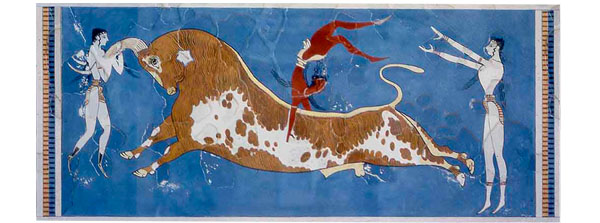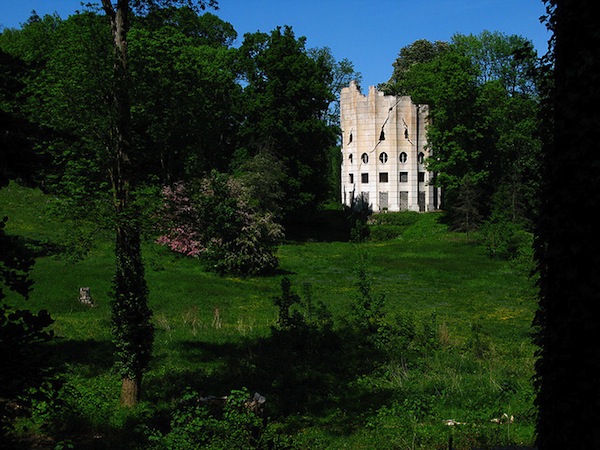Rein & Spur: Classic versus Romantic

Skip the B.S.
By Skip Eisiminger

“Aware that I might have lost some of you who have been busy ‘getting and spending’ or just hunting for gainful employment the last few years, let me make the classic-romantic distinction a bit sharper and less personal. Are you a fence or open-pasture person? Does the draftsman’s line appeal to you or the intensity of Monet’s palette? Does satire tickle your brain, or does a lyric move you to tears? Is sex better in the bedroom or in a forest lit by fireflies?” Skip Eisiminger
“The road to excess leads to the palace of wisdom.”—William Blake
“Neither excess nor abstinence has made man any happier.”—Voltaire
 CLEMSON South Carolina—(Weekly Hubris)—6/24/2013—Shortly after my wife and I moved into the house we still occupy 31 years later, she planted pansies beside the brick patio I had just laid out on a bed of sand. Call it obsessiveness or pride of ownership, but I surveyed my patio almost daily for spindly green aliens rising between my red bricks. A year or so later, after a week’s vacation, we returned to find “weeds” coming up next to the flower bed. I dropped the suitcases and started uprooting these upstarts.
CLEMSON South Carolina—(Weekly Hubris)—6/24/2013—Shortly after my wife and I moved into the house we still occupy 31 years later, she planted pansies beside the brick patio I had just laid out on a bed of sand. Call it obsessiveness or pride of ownership, but I surveyed my patio almost daily for spindly green aliens rising between my red bricks. A year or so later, after a week’s vacation, we returned to find “weeds” coming up next to the flower bed. I dropped the suitcases and started uprooting these upstarts.
“Wait!” Ingrid cried. “Those are pansies!”
“If they grow between the bricks, they’re weeds.” After a brief “discussion,” reason yielded to the romantic appreciation of nonconformist nature. When the bags were unpacked, I pried the bricks out of the sand, and transplanted the pansies to the flower bed. While she was cooking supper, I sprayed a herbicide on my bricks, and order was restored.
In time, I captured the moment in a crotchet called “Aesthetic Quandary”:
A volunteer pansy
grows from a brick.
Romantics say, “Leave her.”
Classics say, “Pick.”
A year or so later, I decided to extend my bricks around the house in the form of a path. I preferred a simple rectangular pattern that followed the house’s outline, while Ingrid desired something that “meandered.” “Meander,” of course, won the day, and I retired to write “Romantic Wife Chastens Classic Husband”:
Ere you pave a straight path
down to the tarn,
meander the route
the cows take to the barn.
Were I more of a romantic like Sir Walter Scott, I would have shot a bird, plucked and split a primary feather, dipped my quill in its blood, and inscribed my verses on the cuff of my silk sleeve.
John Muir, another romantic at heart, often wrote using sequoia sap. As for myself and the two poems you’ve just read, I retired to my study when I found time to write, searched for Edgar Poe’s “tarn,” scanned the Penguin Rhyming Dictionary, and settled back to write on my Dell pc.
Neither blood nor sap is an option on my printer.
But believe it or not, I wasn’t cloned from Alexander Pope. When I was about 14, I used to race up the hill behind our house to climb the tallest pine every time I heard thunder. There I’d sit swaying in the wind, soaked to the skin, shaking my fist at Thor. I rather doubt the “wasp of Twickenham” ever climbed a tree even on a clear day. “Nature” to that archetypal classicist, usually meant “human nature.” He viewed the world so broadly that his idea of a speckled trout was one of “the scaly breed” or “finny tribe.”
Though Pope was not a painter, he resembled his French contemporary Francois Boucher, who complained that “nature is too green and badly lit.”
The arch-romantic Ludwig van Beethoven, on the other hand, said he loved trees more than humans. (Deafness has been known to do that to people.)
Like Karl Shapiro, I prefer to think of what my son and I did rescuing the half-acre lot my wife and I live on as “carving the wilderness into decorum.” Shapiro was referring to Thomas Jefferson’s building of Monticello, and our modest home is hardly that, but it was built in what had been a wilderness of honeysuckle vines and green thorn. Despite the meandering brick path that rings the house, it does possess a decorous air.
Aware that I might have lost some of you who have been busy “getting and spending” or just hunting for gainful employment the last few years, let me make the classic-romantic distinction a bit sharper and less personal.
Are you a fence or open-pasture person? Does the draftsman’s line appeal to you or the intensity of Monet’s palette? Does satire tickle your brain, or does a lyric move you to tears? Is sex better in the bedroom on or in a forest lit by fireflies?
Do you prefer the architecture of the US Capitol or the Smithsonian’s “castle?” Do you like your arches round or pointed? Would you rather take a golf cart through the gardens of Williamsburg or hike through Yellowstone?
Is caffeine your stimulant of choice or absinthe? Does Caesar Augustus arouse your imagination or Dracula? Are you a deist or pantheist—did your God create the universe and die in the Big Bang, or is She still present in every rock and leaf?
Is Ben Franklin’s Armonica your instrument of choice or the Aeolian harp—37 glass bowls on a horizontal axle or a box full of tuned strings sitting in an open window?
Would you turn to a school-marmish dictionary like Samuel Johnson’s or the no-holds-barred Oxford English Dictionary? Is education a “filling up” or a “leading out”? Would you rather dance a minuet or a waltz?
Does your writing target a worldwide audience or is it written chiefly to please yourself? Are you partial to the US Constitution with its balance of powers or the Bill of Rights, which may or may not allow you to carry a gun in public?
Are you drawn more to Apollo or Dionysus? Does your “Cogito” begin “I think” or “I feel”? And, finally, do you think an artist’s best work comes after a lifetime of seasoning, or is she washed up, as Goethe thought, at 28?
If most of your preferences are from the first half of the above pairs, your tastes are decidedly classical, and vice versa.
Too many questions, you say. Then consider this comic chestnut: the Persian romantic poet Omar Khayyam wrote that all he needed was “a loaf of bread, a jug of wine, and thou.” How he planned to pay his rent is unstated. The classically minded critic reads Omar’s line and, at some point, notes that the three have a common denominator: each may produce a yeast infection.
See the difference now?
If not, I have one more trick up my sleeve drawn from the history of architecture.
In about 1780, as the Neo-Classical era was peaking in Europe, Francois Racine de Monville, despite the stirrings of revolt in France, completed what many consider the ultimate tribute to classical antiquity: a home inside a 50-foot-tall fluted column. Call it the folly of a classically trained man who understood the limitations of reason. Monsieur de Monville had a romantic side as well, for he built his four stories connected by a helical staircase inside a “ruin.” The ragged top of his home looks (for it still stands) as if Zeus had snapped off the upper half of the column and devoured the capital. Like Marie Antoinette, who was a guest here once, de Monville reportedly hired a hermit to stroll about the grounds to lend them gravitas.
Nothing is more romantic than an ornamental hermit.
More like white and black than good and evil, there’s no right or wrong in the classic-romantic dualism. The two sides represent either end of the arc of a pendulum swung by the tastes of the dominant class.It has swung for centuries and, though unpredictable, it shows no signs of slowing.
One moment, my wits clamber for attention; the next it’s my heart.
Last Sunday, I went for a barefoot jog only to come home and pull weeds from between my bricks.

Note: The image of Le Désert de Retz, created in 1774 and 1789 by Monsieur de Monville, was shot by Ackteon, and may be found at http://www.flickr.com/photos/73553452@N00/2657773251/.